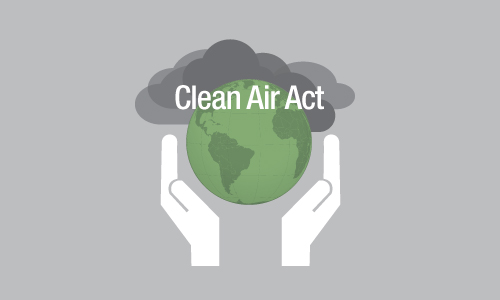Following our recent blog on the prevalence of volatile organic compounds and strategies for removing them from your manufacturing process, it’s time to look at the chemicals that were explicitly earmarked by the Environmental Protection Agency as dangerous. Also known as Hazardous Air Pollutants, these pollutants cause or may cause serious damage to the environment or employee health. As with our blog on VOCs, this will provide you a very brief introduction to HAPs, the Clean Air Act (CAA), the National Emissions Standards for Hazardous Air Pollutants (NESHAP), and more.
What Are Hazardous Air Pollutants (HAPs)?
Put simply, Hazardous Air Pollutants, also known as HAPs, toxic air pollutants, or air toxics, are 187 chemicals listed by the EPA as those that cause or may cause cancer or other serious health effects such as reproductive effects or birth defects, or adverse environmental and ecological effects.
Hazardous Air Pollutants were defined in the Clean Air Act as “any air pollutant listed [in 42 U.S.C. 7412 (b)],” which includes specific chemicals (e.g. arsenic), compounds that include chemicals listed (For example, Arsenic compounds would mean Arsenite, etc.), and other notable toxins.
This list was initially established under the Clean Air Act of 1970 and only contained seven pollutants—asbestos, beryllium, mercury, radionuclides, inorganic arsenic, benzene, and vinyl chloride. In 1990, the list was expanded to include 189 pollutants. In subsequent years, certain chemicals have been removed along with other modifications to the list.
Measurement and Control of HAP Emissions
Measurement of and maximum allowable emission rates are guided by the Clean Air Act, which sets forth Maximum Achievable Control Technology (MACT) Standards and the National Emissions Standards for Hazardous Air Pollutants (NESHAP) to guide rulemaking, enforcement, and more.
MACT: Maximum Achievable Control Technology
MACT Standards affect major sources, which are those sources that emit or have the potential to emit 10 tons per year of HAPs. MACT standards use HAP emissions of the best-performing (top 12%, or in the event of few sources, the best-performing 5 sources) industry sources to set the “MACT floor”, the new minimum standard that an industry must at least meet in order to comply.
The MACT definition goes beyond technology, despite including technology in the acronym. In fact, MACTs include measures, processes, methods, systems or techniques that are used to limit the emissions of hazardous air pollutants.
NESHAPs: National Emissions Standards for Hazardous Air Pollutants (NESHAP)
National Emissions Standards for Hazardous Air Pollutants (NESHAP) were set to help guide industries by creating industry-specific standards (i.e. a major stationary source in the forestry industry will have different NESHAPs than one in car manufacturing).
You can view unique industry standards under the NESHAP, which can be found here.
Enforcement of HAP Emissions
Enforcement standards regarding HAPs were initially described under the 1970 Act. The National Environmental Policy Act created the EPA and allowed this agency to enforce noncompliance. EPA enforcement authority to address HAP emissions was expanded under the CAA Amendments of 1990, setting forth the regulatory environment that exists today.
Controlling HAP Emissions: Many Paths to Better Emissions
While there is much more that can and will be discussed—the CAA is nearly 10,000 pages and therefore is one of the more challenging statutes, and the list of HAPs is longer than this blog—we would like to leave you with one parting note: There are many measures, processes, methods, systems or techniques to control HAP emissions.
From using different materials to implementing different processes, removing or reducing HAP Emissions should be a top priority for manufacturers. One such step you can take is to add an add-on control device such as an oxidizer that can remove up to 99%+ of VOCs/HAPs. Learn more about oxidizers—Thermal Recuperative, Regenerative Thermal, Catalytic, and Rotary Concentrator from the CMM Group and contact us for more detail.




